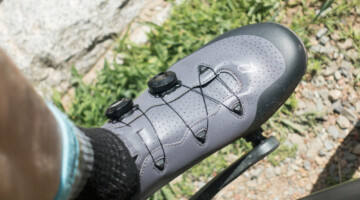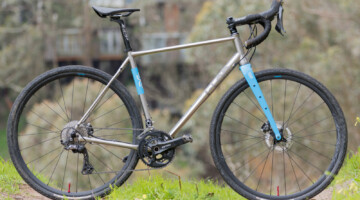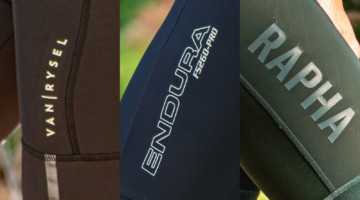The Frame:
The Crossberg’s 7000 series aluminum tubes are gently and subtly shaped: The top tube is flattened along its midsection, the head tube has a shapely hourglass taper and the down tube is pressed into a subtle teardrop shape. The S-bend seat and chainstays provide ample tire clearance, even with the chainstay bridge situated tightly behind the PF30 bottom bracket. Those tubes are joined by TIG welds with the superb evenness of the heavy weld beads that are typical for TIG-welded aluminum. A reinforcing gusset is welded beneath the down tube at the head tube junction, a common place for metal fatigue failure. Lustrous paint is applied in a dual-tone scheme, and the result is an attractive package set apart from the pack of typical black carbon frames. Brown and blue aren’t often paired together, but at least Tufts University students can rejoice.
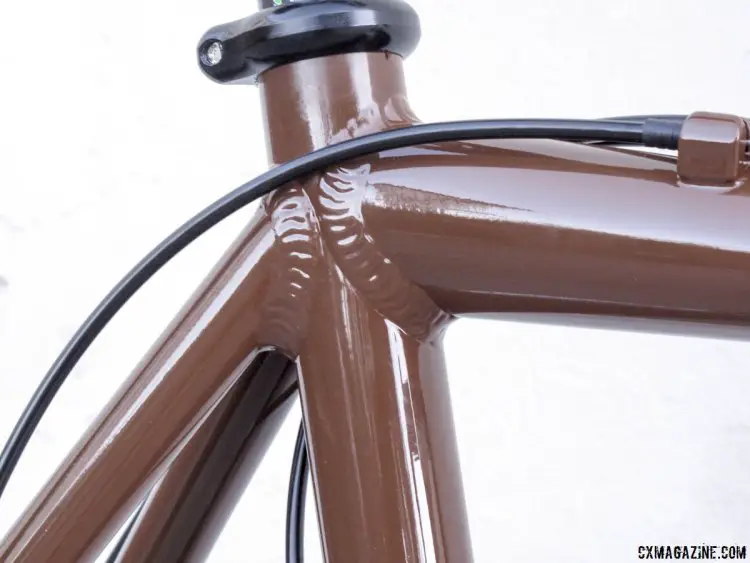
The Ritte Crossberg cyclocross bike varies only slightly from the tried-and-true cyclocross formula with a 73.5 degree seat tube angle, shown above along with the cables running along above the top tube. © Clifford Lee / Cyclocross Magazine
Cables are routed externally, along the top tube with open runs, just like old-school cyclocross bikes before the carbon/internal cable-routing wave. But, instead of an open run to the rear cantilever, the bike has brake-line tie points along the top tube and left seatstay to the rear disc caliper. Curiously, the top tube front derailleur cable run terminates with a cable housing stop behind the seat tube, but there is no reversing pulley. This would necessitate the need for a clamp-on pulley, such as on our review sample, or a top-pull front derailleur appropriate for road levers, or a single-ring setup.
Geometry varies slightly from a tried-and-true cyclocross bike formula, with a slightly slack head-tube angle of 71.5 degrees paired with a slightly steeper seat-tube angle at 73.5 degrees, yielding a short 55cm effective top tube for our size L frame, but it’s close to the equivalent of a 56cm top tube on slacker seat tube angled bikes. The slack head tube pushes the front out a bit, yielding a front center on the long side at 63cm, which, combined with the more standard chainstay length of 42.5cm, yields a 102.2cm wheelbase. The 6.5cm bottom bracket drop splits the line between Euro high and ’Merican low.
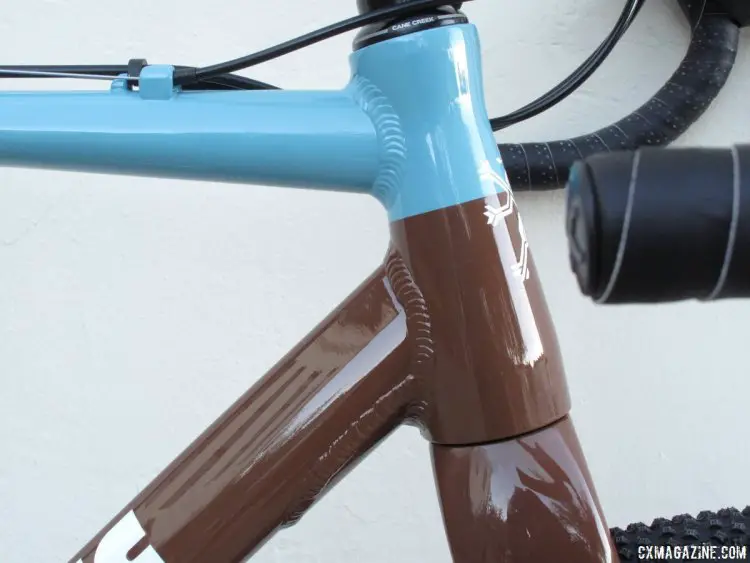
The Ritte Crossberg Cyclocross Bike’s 71.5 degree head tube yielded a 55cm top tube for our large test frame . © Clifford Lee / Cyclocross Magazine


























